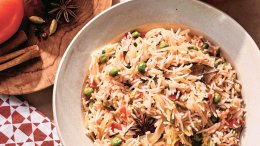Nowadays, it seems there is an increasing number of recognized addictions; street drugs, alcohol, prescription medications, sex, gambling. I think I am addicted to chocolate but is that really a measurable, diagnosable disorder? Food addiction is a budding area of research in psychology, medicine and beyond, with many questions about its legitimacy and diagnosis yet to be answered, but it deserves to be considered in the discussion of health problems, especially obesity.
Food addiction is thought to have many of the same biological, psychological and environmental correlates as substance dependence. When you eat or drink high sugar items, it releases chemicals in your brain that make you feel good. Consuming that sugar-laden bowl of ice cream actually releases endorphins and dopamine, producing a similar high to one you would get from many drugs (Fortuna, 2012). Over time, certain cues like sights and smells can lead to cravings. In 2011, Gearhardt and colleagues performed a study where they showed an image of a chocolate milkshake to both obese and normal weight women. The Yale Food Addiction Scale (YFAS) was then used to assess levels of food addiction. On the 27-question scale, participants were asked to what degree they endorse statements like, “I find myself continuing to consume certain food even though I am no longer hungry” and “My behaviour with respect to food and eating causes significant distress.” Those assessed as “food addicts” using the YFAS displayed similar brain activation as recovering drug addicts when shown pictures of drug use (see Gearhardt et al., 1999).
Also similar to the effects of drug abuse is the disinhibition and tolerance that comes with food addiction. In their study with the chocolate milkshake pictures, Gearhardt et al., (2011) also found that food addicts displayed lower activation in the area of the brain called the lateral orbitofrontal cortex, which is responsible for inhibiting behaviour in the presence of rewards that might lead one astray. So whereas un-addicted individuals would see the chocolate milkshake and be able to refrain from drinking it because they are not hungry, those who endorsed traits of food addiction would not have the control to stop themselves.
Food addiction may also be a subtype of obesity. A study by Davis and colleagues (2011) had participants who rated high on the Yale Food Addiction Scale complete a variety of other questionnaires to determine what was correlated and what was not. The food addiction group had a higher proportion of individuals diagnosed with clinical disorders such as binge eating disorder and depression, as well as personality traits such as impulsivity and poor control of delayed gratification. In terms of eating behaviours, the food addicts also endorsed more emotional eating, hedonic eating (eating for pleasure) and greater cravings (Davis et al., 2011). These findings have the greatest implications for treatment because they make it apparent that there is a lot more going on than solely “food addiction.” All such factors have to be addressed in order to help treat individuals with food addiction, as well as the other concerns mentioned above.
Right now, when it comes to weight loss, diet and exercise are often the two most frequently recommended “treatments”, so to speak. However, with increased attention being given to the rapidly growing area of food addiction, obesity may come to be treated more like a substance abuse disorder than a mere lifestyle change. William Burroughs was probably not referring to food when he listed the ways to ingest substances, but the following quote seems more applicable now than ever. “Whether you sniff it smoke it, eat it or shove it up your ass the result is the same: addiction.”
References
Childress, A., Mozley, P., McElgin, W., Fitzgerald, J., Reivich, M., & O’Brien, C.P. (1999). Limbic activation during cue-induced cocaine craving. American Journal of Psychiatry, 156(1), 11–18.
Davis, C., Curtis, C., Levitan, R. D., Carter, J. C., Kaplan, A. S., & Kennedy, J. L. (2011). Evidence that ‘food addiction’ is a valid phenotype of obesity. Appetite, 57, 711-717.
Fortuna, J. L. (2012). The obesity epidemic and food addiction: Clinical similarities to drug dependence. Journal of Psychoactive Drugs, 44(1), 56.63.
Gearhardt, A., Yokum, S., Orr, P., Stice, E., Corbin, W., & Brownell, K.D. (2011). Neural correlates of food addiction. Archives of General Psychiatry, 68(8), 808–816.













